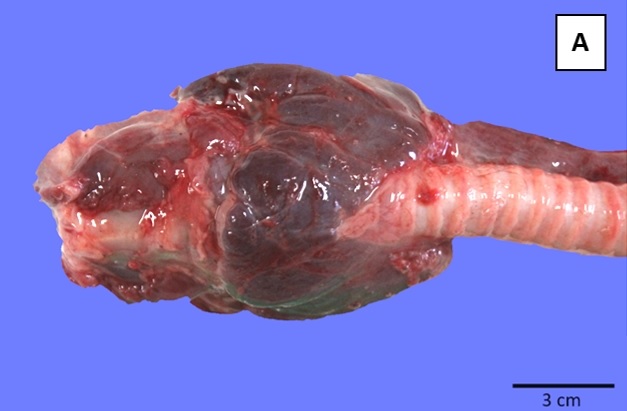Perinatal mortality in cattle associated with goitre
DOI:
https://doi.org/10.24070/bjvp.1983-0246.v12i2p48-52Keywords:
reproductive losses, congenital goiter, iodine deficiencyAbstract
The role of iodine in ruminant reproductive function is well known. However, studies about the impact of this deficiency in reproductive performance of cattle are scarce. This paper describes stillbirth episodes in three beef cow herds in northwest Argentina. The stillbirth losses ranged between 15.8 and 25%. Grossly, the thyroid glands presented diffuse, bilateral and symmetric enlargement. Microscopically, follicular epithelium showed severe hyperplasia and hypertrophy, forming multiple stratified layers of large cuboidal cells, with papillary projections into the follicular lumen. Free thyroxine (T4f) mean levels in serum from aborted cows and heifers was 0.63±0.05 ng/dl. A diagnosis of congenital goiter was performed based on these findings. Following the diagnosis, the herds were supplemented orally and parentally with iodine. Mean T4f level post-treatment was 0.80±0.05 ng/dl and the stillbirth rate dropped sharply.


